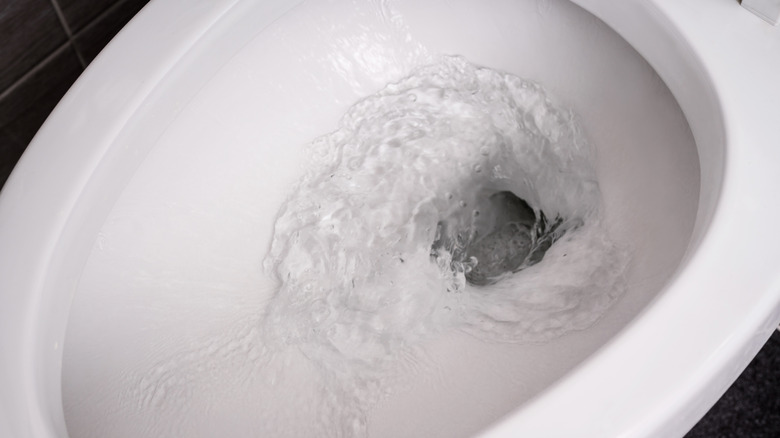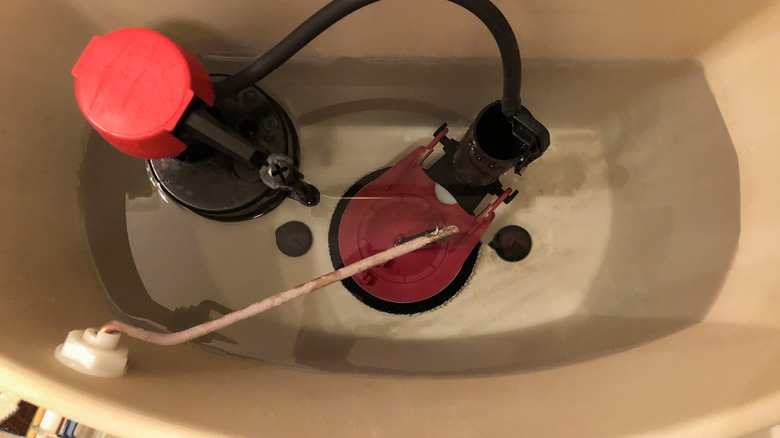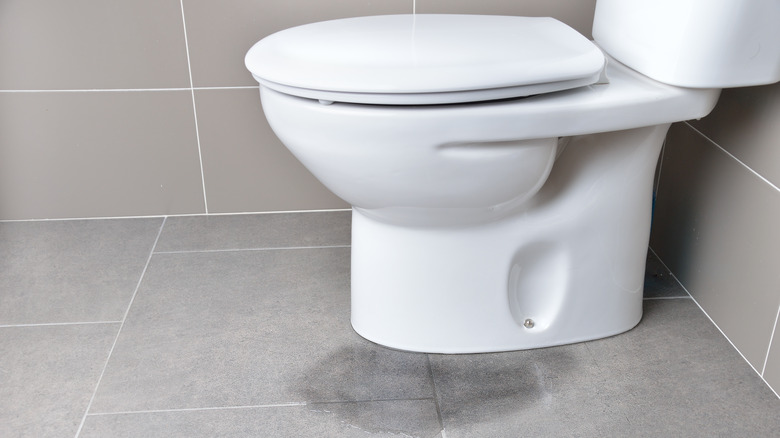This Easy Trick May Be The Answer To Raising Your Toilet's Water Level
Is your toilet bowl not filling up properly after a flush? If you've had the toilet for a while, you'll know how high the water should be in the bowl between flushes. At a minimum, the water line needs to be above the P-trap — the contraption beneath the bowl that blocks sewer gases from coming up through the toilet. If the water level falls any lower, you're in trouble. You may not think much of it, but insufficient quantities of water in the bowl prevent waste from flushing down the drain well, so you're bound to experience frequent, nasty clogging.
Before you go calling the plumber, though, we've got some good news: In certain cases, a brilliantly simple fix can raise the water level in the tank and resolve the bowl issue. To see if this trick will work in your situation, start by looking under the tank cover. The tank water level should be roughly an inch below the fill valve in the tank. If the tank is equipped with an overflow tube, its mouth should protrude above the water line. Now, if the tank water sits much lower than these benchmarks, go ahead and try the method we've outlined below.
How to raise the tank water level to properly refill the bowl
The method for raising the level of water in the toilet tank hinges on the float type. Cup floats and ball-and-arm floats are the two most common types. If your toilet has a cup float, this device may differ depending on the toilet's age. An older float comprises an air-filled cup that moves up and down along the supply pipe as the water level rises and falls.
The cup connects to the fill valve by a long metal stick that hooks onto the valve at the top of the assembly and attaches to the float at the bottom with a clip. You can easily squeeze this clip and move the float up as needed to raise the toilet water. On the other hand, more modern toilets have a long screw that links the cup float to the refill valve. You can tighten the screw to raise the float — and the tank water level — or loosen it to bring the water line down.
Ball-and-arm floats are made up of spherical or cylindrical floats that rest on the surface of the water and attach to the fill valve by a horizontal rod. As the float sinks after a flush, the rod points down with one end, causing the end attached to the fill valve to pivot and trigger the refill. To raise the water level, find the screw at the rod-valve connection and turn it clockwise.
More water in the tank won't always fix an empty toilet bowl
The method described above should help you raise the water level in the bowl if the tank level is too low. However, a number of other root causes may prevent the toilet bowl from refilling properly after a flush. Some of these are easier to fix than others. For example, the flapper seal in the tank may be loose and letting water through. In this case, simply replace the seal or flush valve to stop the leak, and the bowl should start refilling to original levels. Another issue that could be keeping the toilet bowl empty is a clog — a simple, common problem that you should be able to fix with a plunger.
That said, some problems that keep the toilet bowl from filling may need professional assessment or even force you into getting a new toilet. For example, if the bowl seems low on water and it's making gurgling noises, the sewer vent is likely clogged, so the air inside it is moving abnormally and pulling water out of the toilet. You'll need a plumber to inspect the home's plumbing and troubleshoot this issue. Likewise, the toilet bowl itself may be cracked and leaking. You won't necessarily see the crack or the water — the defect may be out of sight and the water might be leaking into the P-trap. Unfortunately, this issue warrants a full toilet replacement.


